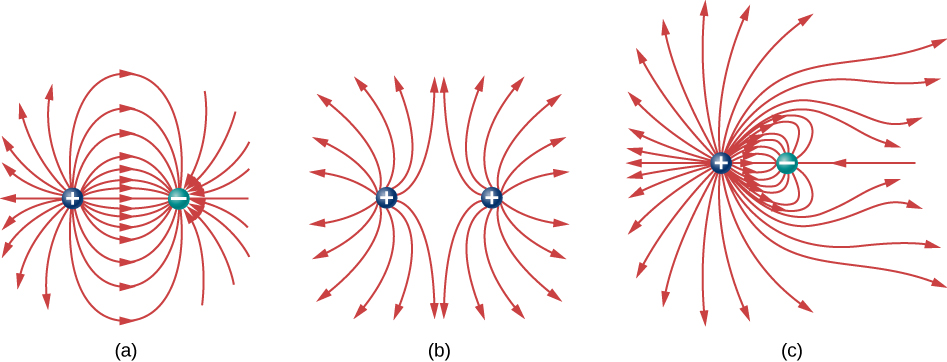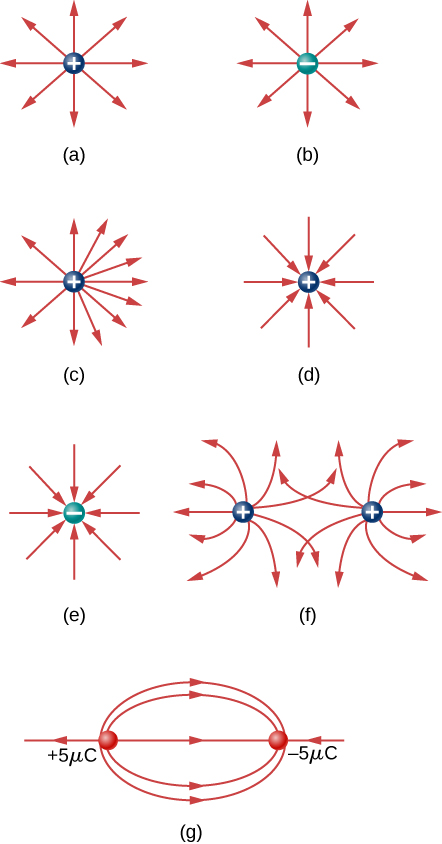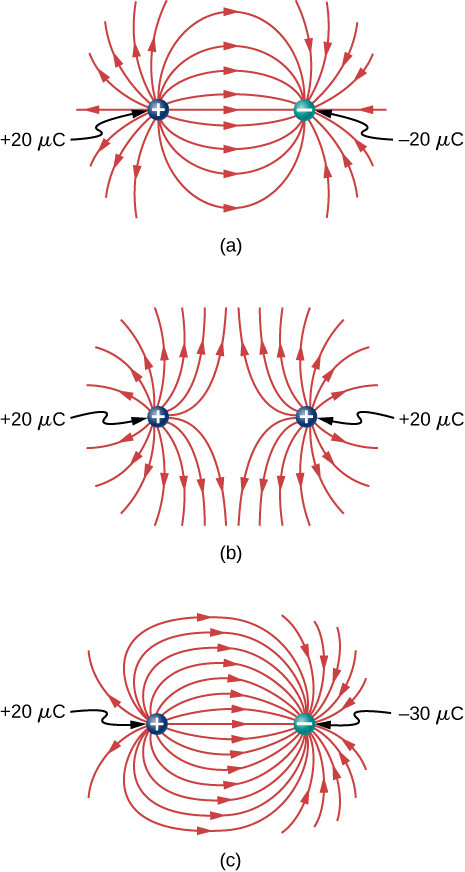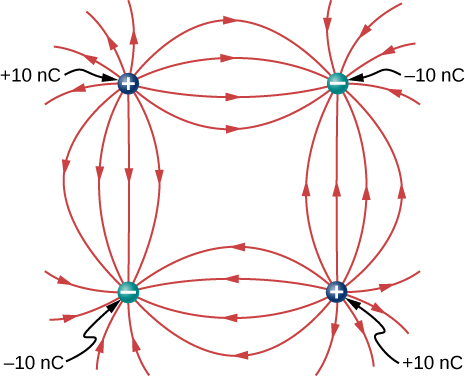| << Chapter < Page | Chapter >> Page > |
Always keep in mind that field lines serve only as a convenient way to visualize the electric field; they are not physical entities. Although the direction and relative intensity of the electric field can be deduced from a set of field lines, the lines can also be misleading. For example, the field lines drawn to represent the electric field in a region must, by necessity, be discrete. However, the actual electric field in that region exists at every point in space.
Field lines for three groups of discrete charges are shown in [link] . Since the charges in parts (a) and (b) have the same magnitude, the same number of field lines are shown starting from or terminating on each charge. In (c), however, we draw three times as many field lines leaving the charge as entering the . The field lines that do not terminate at emanate outward from the charge configuration, to infinity.

The ability to construct an accurate electric field diagram is an important, useful skill; it makes it much easier to estimate, predict, and therefore calculate the electric field of a source charge. The best way to develop this skill is with software that allows you to place source charges and then will draw the net field upon request. We strongly urge you to search the Internet for a program. Once you’ve found one you like, run several simulations to get the essential ideas of field diagram construction. Then practice drawing field diagrams, and checking your predictions with the computer-drawn diagrams.
One example of a field-line drawing program is from the PhET “Charges and Fields” simulation.
If a point charge is released from rest in a uniform electric field, will it follow a field line? Will it do so if the electric field is not uniform?
yes; no
Under what conditions, if any, will the trajectory of a charged particle not follow a field line?
How would you experimentally distinguish an electric field from a gravitational field?
At the surface of Earth, the gravitational field is always directed in toward Earth’s center. An electric field could move a charged particle in a different direction than toward the center of Earth. This would indicate an electric field is present.
A representation of an electric field shows 10 field lines perpendicular to a square plate. How many field lines should pass perpendicularly through the plate to depict a field with twice the magnitude?
What is the ratio of the number of electric field lines leaving a charge 10 q and a charge q ?
10
Which of the following electric field lines are incorrect for point charges? Explain why.

In this exercise, you will practice drawing electric field lines. Make sure you represent both the magnitude and direction of the electric field adequately. Note that the number of lines into or out of charges is proportional to the charges.
(a) Draw the electric field lines map for two charges and situated 5 cm from each other.
(b) Draw the electric field lines map for two charges and situated 5 cm from each other.
(c) Draw the electric field lines map for two charges and situated 5 cm from each other.

Draw the electric field for a system of three particles of charges and fixed at the corners of an equilateral triangle of side 2 cm.
Two charges of equal magnitude but opposite sign make up an electric dipole. A quadrupole consists of two electric dipoles are placed anti-parallel at two edges of a square as shown.

Draw the electric field of the charge distribution.

Suppose the electric field of an isolated point charge decreased with distance as rather than as . Show that it is then impossible to draw continous field lines so that their number per unit area is proportional to E .

Notification Switch
Would you like to follow the 'University physics volume 2' conversation and receive update notifications?